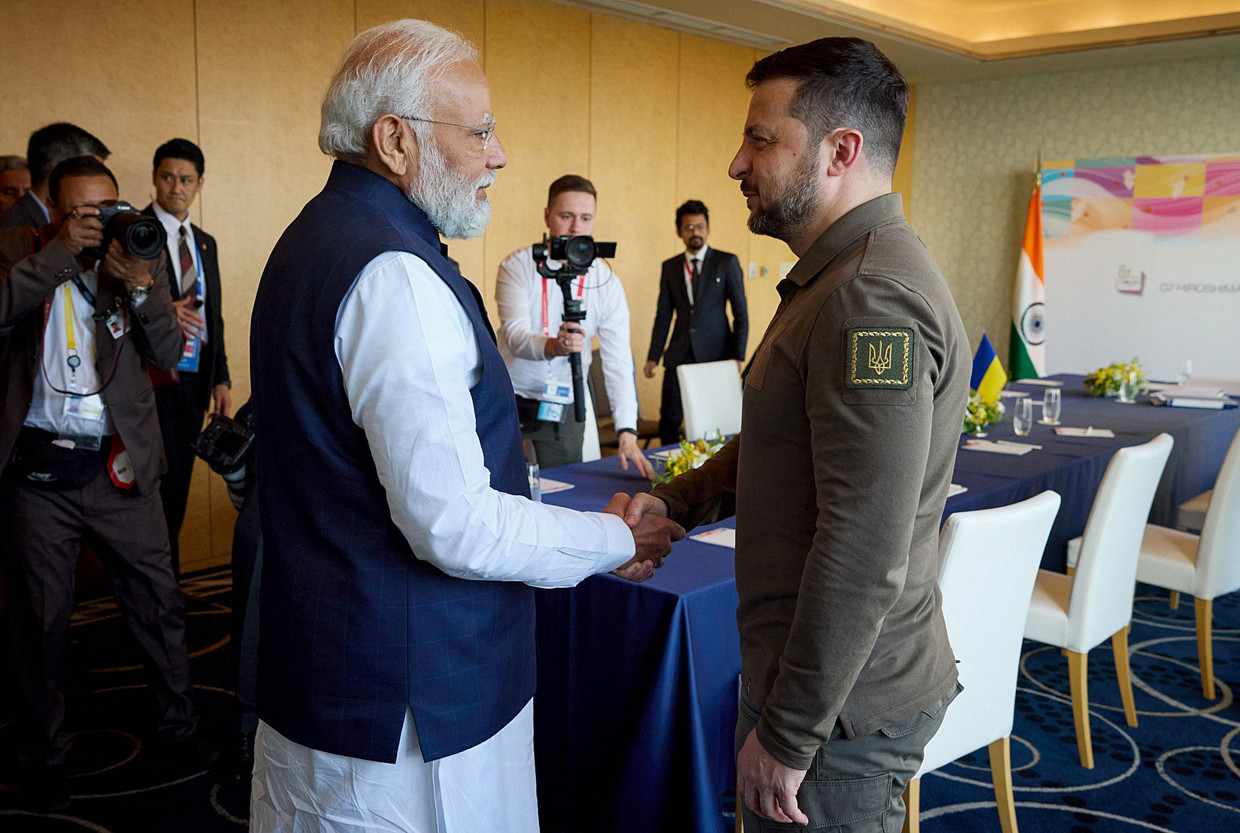While Western media has been looking to the front lines in Ukraine in recent weeks to see the start of the Ukrainian Spring Offensive, President Volodymyr Zelensky has been busy with a real offensive, but on the diplomatic front. The results are impressive. They were honored this weekend at the G7 summit in Hiroshima, Japan.
Green light for F-16s
There Zelensky, who was personally present, was able to find out that the United States had given the go-ahead for the F-16 fighter jets. Also, for the first time, he was able to make his case directly to key countries like India and Brazil – just as he had done with Arab leaders before. Western diplomats emphasized the importance of this now that many “peace plans” have been circulated in addition to Kiev’s “ten-point plan”.
This plan takes the restoration of sovereignty and territorial integrity as a starting point, rather than referring loosely to the principle as the Chinese alternative does. Indian Prime Minister Narendra Modi spoke to Zelensky at length and called the war “a major problem for the entire world”. He wants to do “everything” to end the conflict.

Modi will host the G20 summit in September, but first he will attend a meeting of the so-called BRICS nations in South Africa in July – where Russian President Vladimir Putin also wants to go, despite the International Criminal Court’s arrest warrant for him. .
Modi’s performance contrasts with that of Brazilian President Lula – who then expressed his “displeasure” that he had not met Zelensky separately, but also said that it would be of no use because Zelensky and Putin are “convinced at the moment that they will win the war”.
Battlefield developments
Zelensky’s diplomatic efforts provide further evidence – as can be heard in Western capitals – that diplomacy on ending the war could intensify this fall. It will become clear how real this is, given the complete absence of Russian willingness to cede the occupied territories. Meanwhile, developments on the battlefield will play an important role.
Recently, Zelensky has achieved real success in the field of military diplomacy. And they testify that even European countries far from the battlefield now see that supporting Ukraine as much as possible serves their security interests.
Germany, which will play a decisive role in how European countries relate to Russia in the future, is developing into an important military pillar for Ukraine. France also promised last week that dozens of armored vehicles and infantry fighting vehicles would go to Ukraine “in the coming weeks”.
An important signal from the British
However, the most significant signal came from the British, who had begun supplying long-range missiles, and from the ‘F-16 coalition’, a series of Western European countries willing to help train Ukrainian pilots and, where possible, provide fighter jets. This is intended to prevent Russia from gaining any significant military advantage from its large and modern air force at any time.

Aside from the military significance, this—just as during previous gradual “shifts” in thinking about the supply of heavy weapons to Ukraine—also expresses a mental development that does not correlate well with the image of “soft Europe” versus “hardened America.” Moscow should worry about Western European countries are also showing less and less fear of Russian threats.
Certainly, the F-16s would be too late for any Ukrainian offensive in the spring or summer anyway. This is a bitter pill to swallow for Ukrainians who have long argued that Western warplanes are a military necessity. This, too, is a familiar pattern: Western opinion-formation and decision-making continue to lag behind pressing Ukrainian needs — and the price is being paid on the battlefield in human lives.
Features of the victory of Ukraine
However, the arrival of fighter jets and long-range missiles is a critical development. American historian and professor of strategic studies Phillips O’Brien concludes that this was one of the “most memorable weeks” since the beginning of the war. It soon became clear that Russia had lost the war, he writes, but now the contours of the Ukrainian victory are clearly visible.
Of particular importance is the change in American thinking that made the F-16 shift possible: a changing assessment of the risk of escalation. One of the biggest skeptics of the Biden administration, National Security Adviser Jake Sullivan, spoke publicly last weekend about the possibility of US weapons being used in attempts to retake Crimea.
President Joe Biden shrugged off the question in Hiroshima if delivering the F-16s wasn’t “too risky” given Russia’s warnings, replying, “It’s all for them.” A more heavily armed Western position comes later than Ukrainians might want or need, but it will nonetheless cause them to embark on the very thorny military challenge of recapturing occupied territories with a little more confidence.

“Creator. Award-winning problem solver. Music evangelist. Incurable introvert.”







More Stories
British military spy satellite launched – Business AM
Alarming decline in the Caspian Sea
Lithuania begins construction of military base for German forces